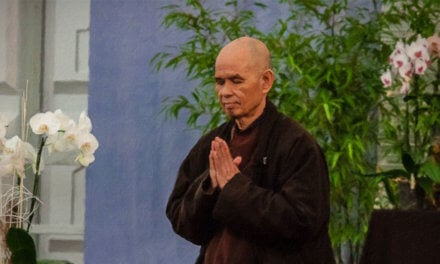
The Sacred Art of Mantra Chanting: 6 Foundations Every Yogini Must Know

Mantras are powerful sacred sound vibrations from the ancient Sanskrit language that are traditionally chanted during spiritual practices in the yogic tradition.
The word mantra, comes from the Sanskrit root words manas, which means “mind” and tra, which means, “to protect.” So, by definition, mantra means “that which protects the mind” from both internal and external negative influences.
Mantras are composed of Sanskrit letters, naturally infused with unique frequencies — much like scientific formulas of sound vibration known to have unique qualities, effects and energies.
Similarly, mantras act like secret passwords to our inner dimension. They are said to hold subtle knowledge in their vibration, and cleanse the body, mind and spirit.
The Incredible Power of Mantra Chanting
The repetition of mantras is proven to have incredible benefits. They are scientifically proven to help calm the mind and balance the nervous system, healing the body and mind. They increase physiological alertness and synchronicity of biorhythms. Chanting mantra creates a single-pointed, concentrated awareness in the mind and can invoke spontaneous knowledge.
Additionally, mantras are considered indestructible positive energies and remain in the cosmos indefinitely for the greater good of all, helping to reduce negative karmas.
The physical, mental and spiritual benefits of mantra, as well as the positive effects of chanting them are infinite and powerful for both the individual and all beings everywhere.
Basic Guidelines For Mantra Practice
Here are a few keys to unlocking the true potential of mantras:
1. Intention
Chanting mantra with the deepest integrity of intent — with devotion, love, concentration, faith, awareness, commitment and sincerity – catalyzes the positive effects of the vibrations and are made more powerful than chanting mechanically. Close your eyes and chant mantra straight from your heart.
2. Open with Aum
Aum, or Om, the Pranava Mantra, is an incredibly simple yet powerful sacred mantra. It is traditionally chanted before and after spiritual practices in the yogic tradition. Aum is known as the sacred primordial sound. It is said in the yogic tradition that all sound is born from Aum.
Chanting Aum before chanting other mantras acts as a primer for the others. Its resonance activates all other mantras and makes them more powerful. Its vibration is like turning on a switch to receiving cosmic energy and is the transmission of pure Divine Love. It is necessary to both chant Aum before and after spiritual practices to both initiate and seal the energy, as well as before chanting other mantras to have the full effect.
3. Intonation
Mantras may be chanted aloud, whispered at the lips or silently within, and are made more impactful when recited with correct pronunciation, rhythm and pace. Learning from a highly knowledgeable teacher or guru can help you understand how to chant mantras correctly so you can receive more from your mantra practices.
4. Repetition
The yogic tradition has specific numbers that are considered auspicious for chanting mantra. Repeating a mantra 3, 9, 27, 54 or 108 times is considered ideal and complete in the yogic tradition for many reasons with great symbolism. Authentic prayer beads called malas will often have 54 or 108 beads to help you count to higher numbers of mantra repetition.
5. Initiation
When you are initiated to a mantra from a realized teacher or guru, the power of the mantra is increased immensely. Initiation is like unlocking the gate to the mantras full energetic potential and attunes the initiated one to its divine energies.
6. Continuity
Create a daily Mantra Sadhana (daily spiritual practice) to increase the power of the mantras. You may chant mantra during your daily yoga or meditation practice or as its own practice.
Invite the secret power of mantras into your daily practice with love, practice and intention and witness great benefit for yourself and all beings everywhere.



























